While the Zapruder film provides a chilling glimpse of the assassination, the JFK autopsy photos offer a macabre puzzle – one riddled with inconsistencies and shrouded in controversy. Sealed away from public view, these images have fueled decades of speculation and debate, their power lying in what they might reveal about one of America’s most tragic events.
The Zapruder Film: A Starting Point, Not the Whole Picture
Abraham Zapruder’s home movie, capturing the fateful moment in Dealey Plaza, is seared into the public consciousness. But this grainy footage, while horrifying, has limitations. It doesn’t clearly show the impact of the bullets, the precise sequence of wounds, or offer multiple angles crucial to forensic analysis. This is where the autopsy photos hold potential but controversial significance.
JFK Autopsy Photos: A Legacy of Secrecy and Speculation
Taken at Bethesda Naval Hospital, not in Dallas as some conspiracy theories claim, these photos weren’t meant for public consumption. John Stringer, the official photographer, documented the grim reality of President Kennedy’s wounds in stark black and white. Over time, color versions emerged, largely through the work of researcher Robert Groden, a consultant to the House Select Committee investigating the assassination. The very existence of these color photos, with their chain of custody debated, fueled early suspicions of tampering.
Controversies and Discrepancies Fueling Theories
The Unknown Photo Technician: A recent revelation, as reported by PetaPixel, alleges a photo technician made a secret copy of the photos, fearing for their safety due to what the images supposedly show. This claim, yet to be fully verified, adds another layer to the narrative, suggesting potential pressure to suppress certain visuals.
Online Debate and Frame 313: Reddit’s r/JFKassassination forum is a hotbed of analysis. Users meticulously compare photos, with Frame 313 of the Zapruder film often juxtaposed with autopsy images. Discrepancies in head wound positioning are fiercely debated, fueling speculation about the bullet’s trajectory.
Allegations of Alterations: James H. Fetzer, in his article (link to be provided), accuses the National Photographic Interpretation Center (NPIC) of manipulating the images. While this is a significant accusation, it’s crucial to note that other researchers dispute these claims, highlighting the need for balanced analysis.
The Mystery of the Missing Frames: The exact number of photos taken remains unknown, fueling the belief that key evidence, particularly of the head wound, might be deliberately withheld.
Beyond Gore: Why These Photos Matter
The Single Bullet Theory vs Multiple Shooters: The autopsy photos are crucial in this debate. The head wound’s location, the presence (or absence) of a back wound, and bullet trajectory analysis all rely on accurate photographic documentation.
Medical Evidence and Cause of Death: While the cause of death (gunshot wounds) is undisputed, the photos could reveal more about bullet type, angles of entry/exit, and other details crucial to forensic pathologists and historians alike.
A Raw, Unflinching Historical Record: Controversy aside, these images are a visceral reminder of a pivotal moment. They document the reality of the assassination, even if disturbing to some, and hold historical value beyond their role in fueling speculation.
The Ethical Dilemma: Transparency vs. Respect
The debate surrounding the release of the JFK autopsy photos is a microcosm of a larger societal struggle:
The Right to Know vs. Protecting the Deceased: Should these images, belonging to a deceased person and their family, be publicly disseminated? Where does historical significance supersede privacy concerns?
Sunlight as Disinfectant: Proponents of release argue that transparency is crucial, especially given the government’s history of secrecy surrounding the assassination. They believe full disclosure would quell conspiracy theories, even if some find the images upsetting.
Fueling Trauma and Exploitation: Opponents argue that releasing the photos would be exploitative, causing unnecessary pain to the Kennedy family and potentially inciting violence or unrest.
The JFK Autopsy Photos in the Digital Age
What was once confined to grainy prints is now subject to the power of technology:
3D Modeling and Enhanced Resolution: These techniques, applied ethically and with proper sourcing/authentication, could reveal details previously unseen, aiding in bullet trajectory analysis and potentially corroborating or debunking existing theories.
The Rise of the Citizen Investigator: Online communities, armed with digital tools, scrutinize every pixel, comparing versions, and proposing new interpretations. While this democratizes access, it also necessitates a critical eye to discern credible analysis from unfounded speculation.
The JFK autopsy photos remain a locked door in the hallway of history. What they conceal – corroborating evidence, shocking revelations, or merely the gruesome reality of a national tragedy – continues to fascinate and frustrate in equal measure. Until the day they are fully released, the debate will rage on, a stark reminder of the enduring power of unanswered questions.
- Crypto Quotes’ Red Flags: Avoid Costly Mistakes - June 30, 2025
- Unlock Inspirational Crypto Quotes: Future Predictions - June 30, 2025
- Famous Bitcoin Quotes: A Deep Dive into Crypto’s History - June 30, 2025
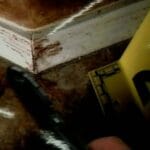
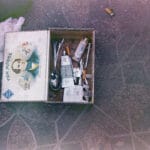
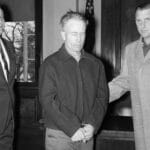
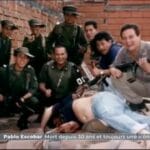
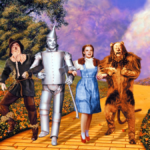
![Ed Gein's House of Horrors: Rare Crime Scene Photos and the Disturbing Truth Ed Gein [Misc.]](https://www.lolaapp.com/wp-content/uploads/2024/11/ed_gein_crime_scene_photos-150x150.jpg)









